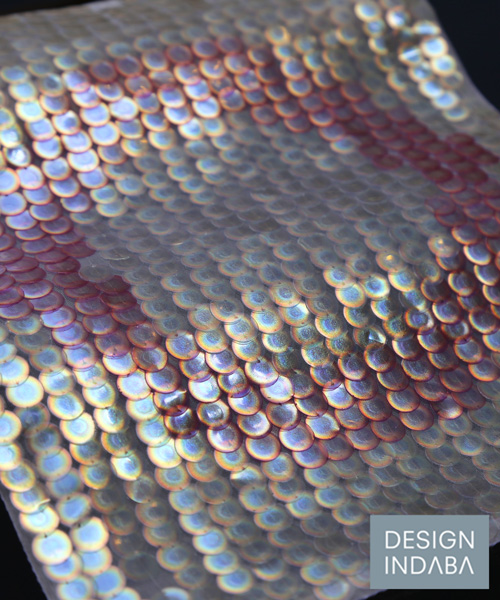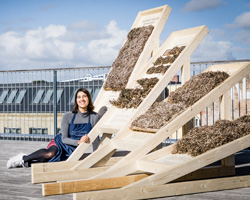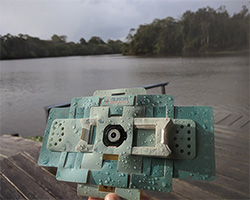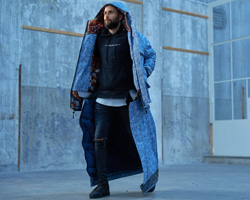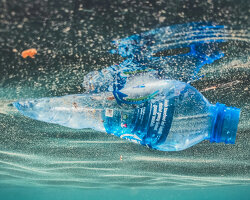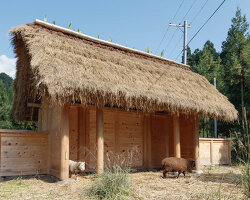in her material research and design project, bio iridescent sequin, elissa brunato has found a way to create colorful shimmering sequins using wood, which are compostable and made with a waste-free process. part of a wave of innovation that transforms biological elements into sustainable materials (think agricultural waste, mushrooms, or seeds), the london-based designer has developed an alternative to the harmful petroleum-based plastic sequin production, which currently dominates the embellishment supply of the fashion and textile industries. designboom had the chance to catch up with brunato during design indaba 2020, and discuss the benefits of cellulose as a sustainable alternative, its applications, and future potential. read the full interview below.
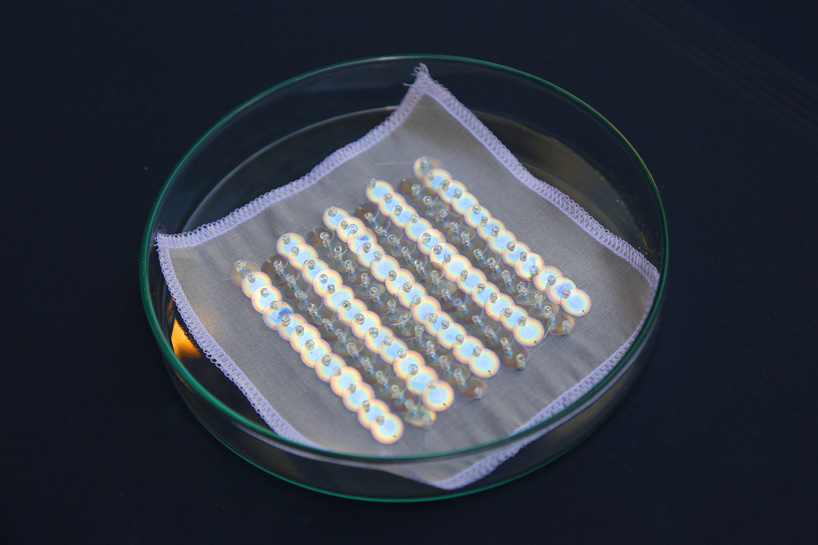 all images courtesy of elissa brunato
all images courtesy of elissa brunato
designboom (DB): can tell us a bit about your background and what you’ve done so far?
elissa brunato (EB): when I graduated from fashion design, I had this very specific idea that I wanted to gain experience within the industry. so I worked for about eight years within fashion, from production, to design development, and then I also specialized in embroidery, and was therefore able to travel to a lot of different factories around the world and see what was happening there. it was this exposure that not only allowed me to understand how beautiful sequins are and how they’re used within the industry, but also the environmental impact of the disjointed fashion system they fit within. going back to the design studio in london, I really felt like I couldn’t justify the design choices with these materials, after seeing the other side to the story. so I took time out from my career to look at materials and specifically, the material landscape of the fashion industry and how this could be not only more sustainable, but also keep that high aesthetic; that for me is the most important thing. I don’t want a sustainably-dyed top if it’s not as brightly colored as this. I really came from that aesthetic point of view of bright and alluring colors.
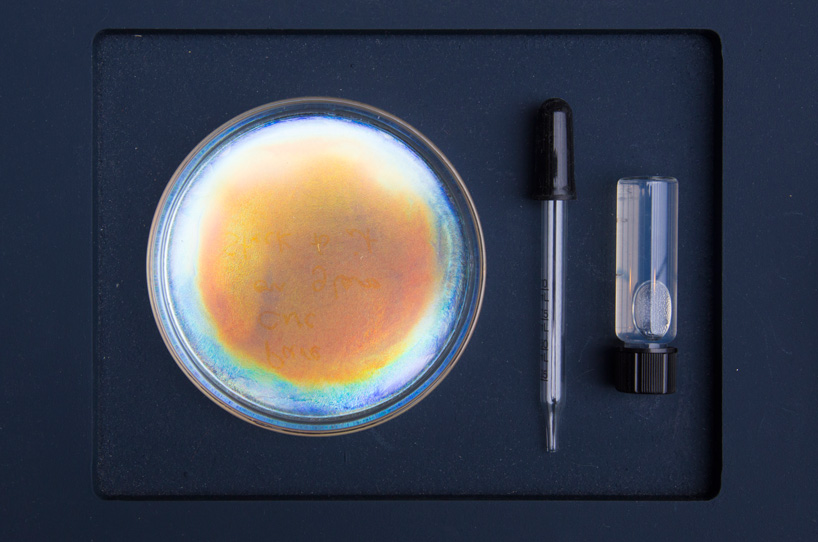
DB: what is the environmental impact of common sequin production?
EB: there are lot of synthetic chemicals that create these optical shimmering finishes. then there is the core material structure of sequins, which is usually PVC or a polyester or pet and they’re all based around petroleum, the resource that it’s coming from is finite or extremely slowly renewing, and it’s being used for such a frivolous objects as sequins that then leak into the environment, at every point of the supply chain, use phase and disposal. they’re so small, they’re around an average of five millimeters, and also not biodegradable. they’re actually leaking into our waterways, and fish are attracted to small shiny particles as they look like food, and they eat them and these bits of synthetic plastic end up in our food chain. sequins contribute to the microplastic problem our world is facing, but it’s also the health of embroidery workers who are constantly handling PVC. there’s a lot of bio-accumulative chemicals, including carcinogens and hormone disruptors in that plastic and with the overexposure to them, these chemicals can cause health problems.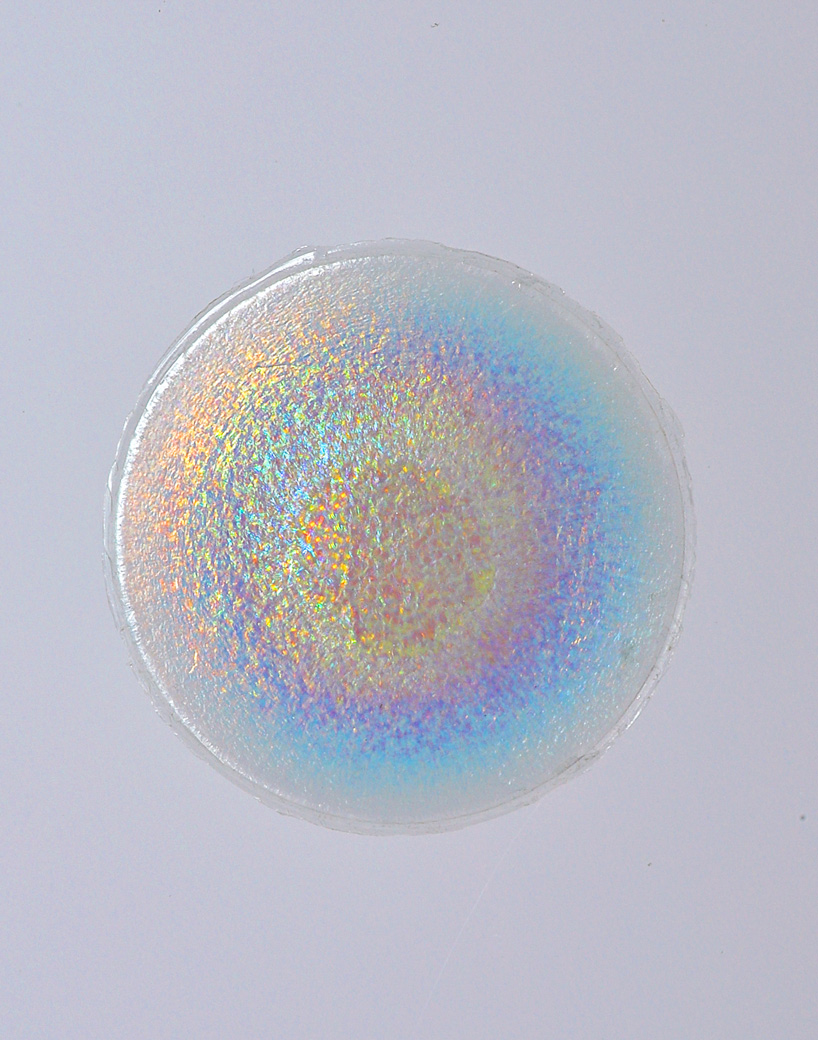
DB: how do you go about your process of making something that is more sustainable?
EB: my approach was about understanding the production system and understanding where sequins are ending up. this guided me on how to redesign the material. sequins can’t be recycled, it’s industrially not feasable. so for me, it was about designing it in a way that fits within the biological system. I looked to nature, nature has shimmering objects – think of butterfly wings, or beetle wings, or scales – and it was about asking, why aren’t we doing what nature is doing? so I used cellulose particularly because it is a fast-renewing resource. there’s no point repeating history and using a metal or a mineral, as these making the object heavy and are precious resources that are not as fast-renewing. for me it had to be something that we could use in abundance and that would not be harmful to our environment if it leaked. that’s the main point. that’s why cellulose, I think, is the most important part of the story. creating color through the structure, but using an abundant resource.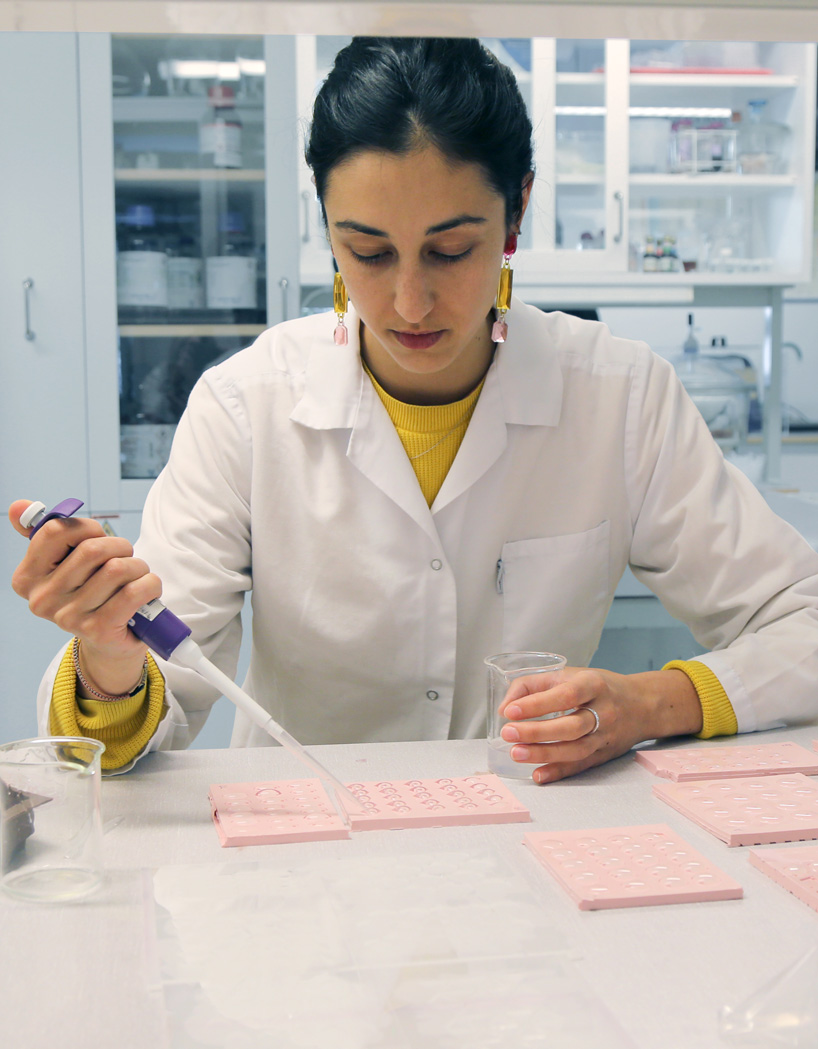 elissa brunato in her lab
elissa brunato in her lab
DB: so how do you use cellulose as an alternative? is it in a liquid form?
EB: there’s a process that we put it through, and that allows us to be able to make a sequin through a waste-free process. sequins are usually cut out of large sheets of material, stamp-cut, and you get about 30% material wastage. with these sequins, I’m making just the sequins and no material off-cuts. the material is structured in a way that the light refracts and we see this iridescent shimmer.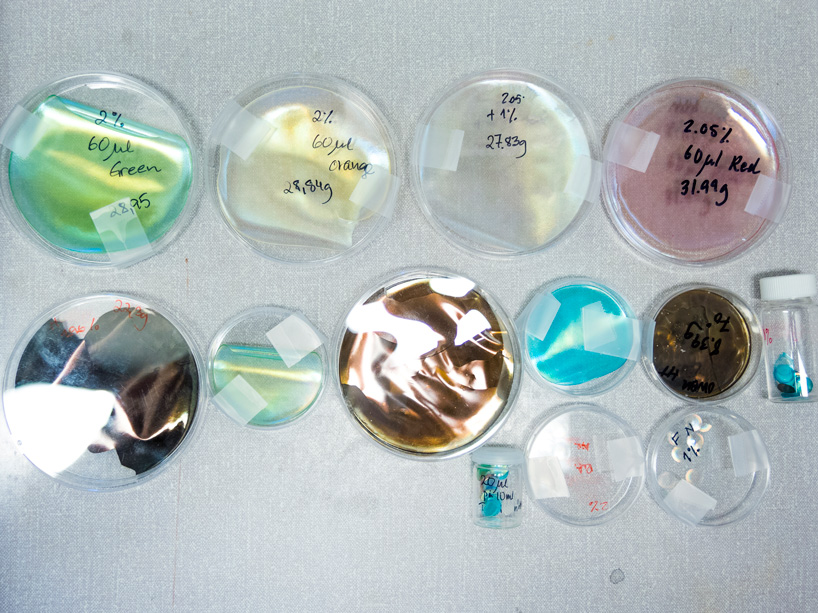
DB: have you applied them in any clothing or textiles so far?
EB: I wanted to show the project to the world as a sample, because I wanted people to be able to imagine what they could see out of it as a starting point. that would then open the conversation up to the different uses it could have, rather than close it to fashion. and, of course, I’d love to see it now going on a garment, that would be the ideal, but it has to be with someone in the industry that shares the same vision to make that happen. for me it is about creating a dialogue with people in the industry about how these new materials are used.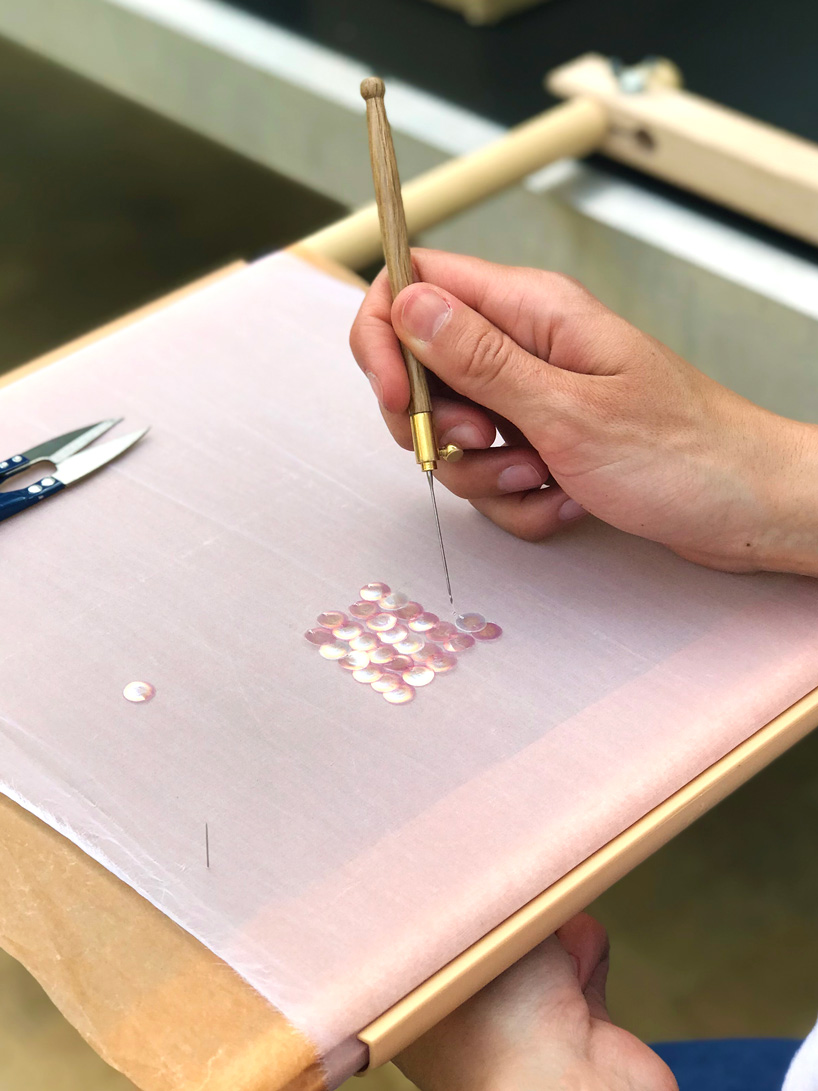
DB: do you think this technique can be applied to different materials, like glitter, which a lot of companies are banning right now because of how harmful it is?
EB: between glitter and a sequin, there is not much difference in science, and they’re not really made in any different way. the only thing is that the sequins have a small hole in the middle that allows you to stitch them, but you can also get another version called spangles, which are the ones that are adhered directly onto fabric. there is a shift with glitter towards bio-degradable glitter and its a great move forward but that only replaces the core plastic part with a plant-based material. the color is still coming from chemicals and the shimmer is still coming from aluminum, which is a resource that is causing health threats. so for me, it’s about showing the industry that there are other options. shimmer is one of the hardest things to attain naturally without using a precious metal or synthetic chemicals.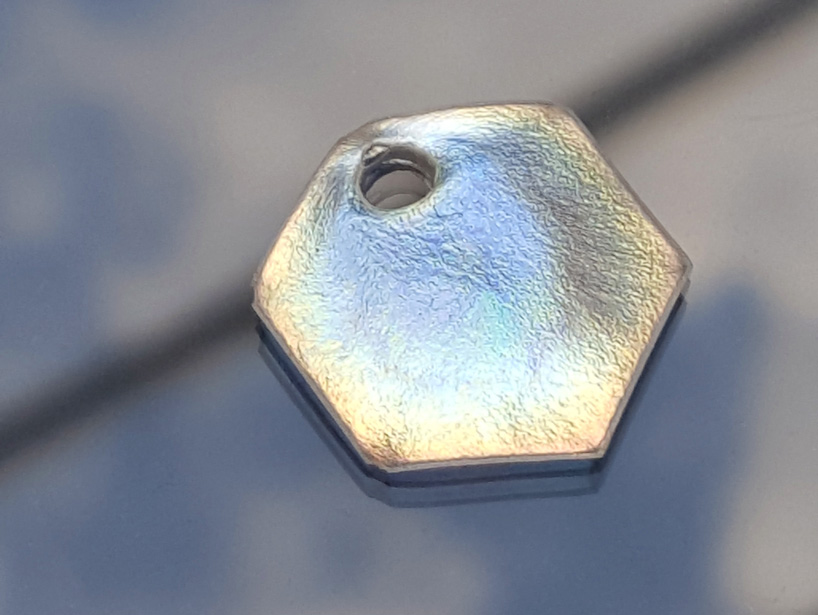
DB: what are your plans for the future?
EB: I would love to be able to start engaging with the industry and this is the next year’s plan. I’m holding off just making items myself as I really want to have a meaningful collaboration with a designer, whether it be footwear or interiors or a fashion designer for a garment, and have them be part of the conversation to create these first magical pieces. shimmering without synthetic chemicals or precious metals. then also to keep on researching, because I think the structure of bio color is absolutely fascinating. the way that we dye textiles can be really really polluting and the way that we also dye plastics, and our whole color landscape is using so many hazardous chemicals that leak into the environment. working with the structures that create bio color really changes the design process.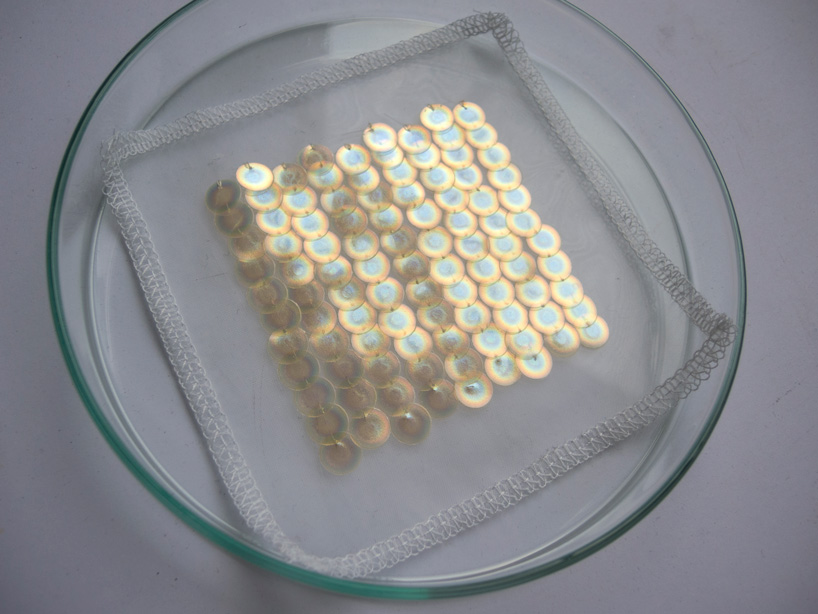
DB: do you think that your process could potentially upscale in the future and replace the standard, harmful way of producing sequins?
EB: yes, it’s really new right now, so we’re only doing it at lab scale. it’s something that we would love to upscale but there’s challenges with that, that we have to address, but hopefully yes. the reason why I really went towards cellulose is it’s something that has the potential to upscale. it’s a material that can also come from waste. you can obtain it from leftover vegetable skins, paper or denim. so there’s a potential to link it up with the surrounding waste stream to be able to then have a manufacturing system right next to it that that works in harmony, and upscale in a more localized way.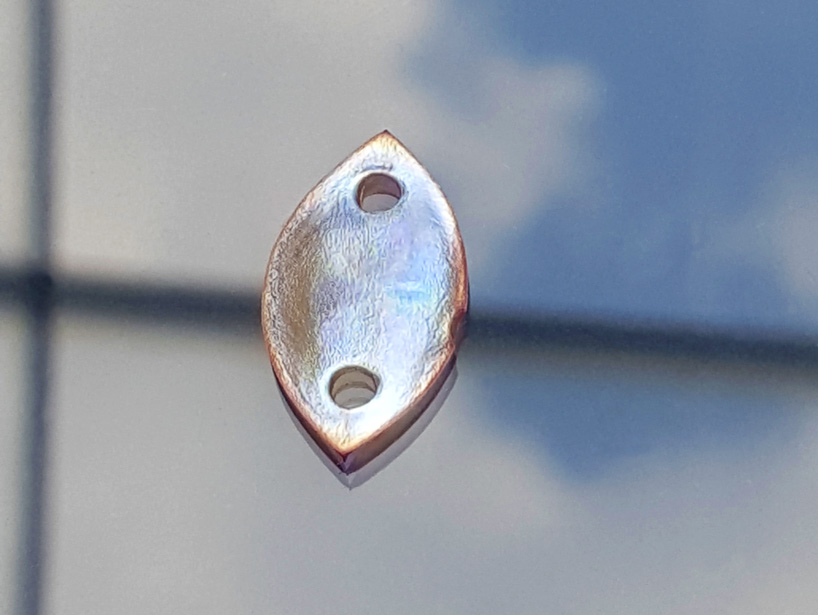

project info:
name: bio iridescent sequin
designer: elissa brunato
collaborators: tiffany abitbol (senior researcher, RISE research institutes of sweden) hjalmar granberg (scientific leader within biobased electronics, RISE research institutes of sweden)
mentor: claire bergkamp (worldwide sustainability & innovation director, stella mccartney)
